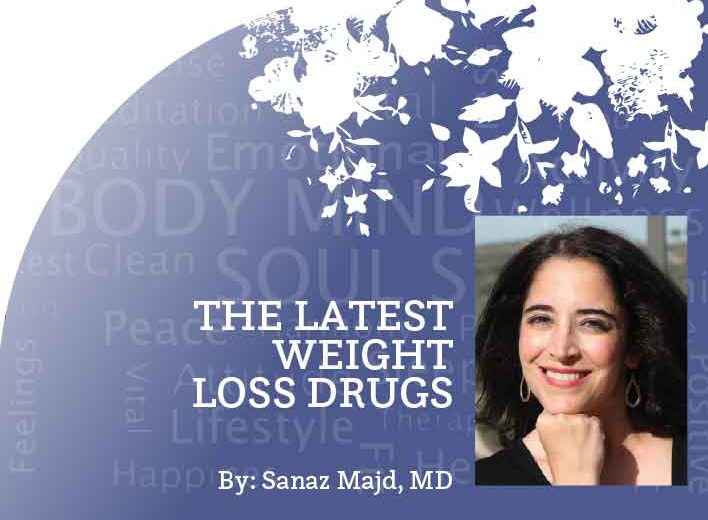By Sanaz Majd, MD
According to a New York Times story released in September, Americans have vastly halted their preventative health screenings since the pandemic hit. This development is not unexpected, however, as even the medical community has been encouraging everyone to delay non-urgent care. As a result, in April 2020, childhood vaccinations dropped nearly 60%, mammograms and pap smears by 80%, and colonoscopies by 90%. We’ve rebounded a little since, but we still have a long way to go in order to catch up.

This may be of concern because we do not know how many breast and colon cancers we are not detecting, for instance, or if a disease like measles will remerge with a vengeance.
Note that one of the main objectives of annual physical exams is to catch up with this routine health maintenance. So if you are delaying your physicals, you may not be aware of what screening tests you may be due for.
So in this issue, we will focus on the top five cancer screenings that are recommended by expert groups, including the U.S. Preventive Services Task Force (USPSTF), that provide practice guidelines for doctors. Whether you decide to complete these screenings now or at a more opportune time, it is imperative to remain aware of the recommendations so that you can take charge of your health.
Note that these are guidelines, which may be modified depending on the risk factors of a person. So it is always best to seek your doctor’s input.
PROSTATE CANCER
Prostate cancer is the most common cancer in men aside from skin cancer. Advanced age is the strongest risk factor, with 80% of those with prostate cancer being over the age of 65. Family history is another risk factor, along with African Americans who also have a significantly higher incidence and mortality rate from prostate cancer. The National Cancer Institute Surveillance, Epidemiology and End Results Program (SEER) has also interestingly found a link between a high fat diet and prostate cancer.
The prostate specific antigen (PSA) is a simple blood test used to screen for prostate cancer. But false-positive tests, biopsy complications, and overdiagnosis make the test a somewhat controversial one. In addition, this screening has shown to prevent only 1.1 deaths per 10,000 person-years in studies.
The screening recommendation has evolved over the years, but the current recommendation is to decide on an individual basis for men ages 55 to 69 whether or not to get routinely screened for prostate cancer. You and your doctor can make that joint decision together. For men ages 70 or higher, the harms of screening have generally been shown to outweigh benefits.
BREAST CANCER
The various expert groups do not currently agree on when to first initiate screening in women in their 40s, nor is there a clear-cut consensus on the frequency of mammograms for breast cancer screening in all women. This makes things a little more complicated when providing patient recommendations.
The dispute is primarily due to the risk of false-positive results, unnecessary biopsies, and the emotional impact and distress that abnormal mammogram screenings may cause. Furthermore, the treatment for breast cancer has also advanced significantly through the years, yielding increased survival rates, and it is controversial whether or not more frequent screening would further improve survival.
For instance, the American Cancer Society (ACS) recommends that mammogram screening begin at age 45 and continue annually until age 55, at which point the frequency may decrease to every one to two years. But the USPSTF recommends that for women in their 40s with average risk (i.e., no family history), the decision to start screening should be an individualized one based on personal preference and a discussion with the patient’s doctor. Note, however, that women with a first degree relative with breast cancer (such as a parent or sibling) may be considered more than average risk, and thus they may benefit more from screenings in their 40s.
For the average-risk woman in her 50s, mammograms are generally recommended every 1-2 years by the USPSTF until the age 75. For those age 75 and higher, the USPSTF reports that there is not enough evidence to assess the benefits versus harms of screening and, therefore, the decision should be an individualized one. But the ACS recommends individualization of the decision based on the patient’s current health and life expectancy.
So to summarize, until there is a consensus reached by various expert groups, seeking your doctor’s input and combining it with your own personal preferences can help guide you on when to initiate screenings in your 40s and whether to complete the screenings every year or every two years thereafter.
CERVICAL CANCER
For the average healthy female, a “pap smear” (cervical cytology) is recommended every 3 years beginning at age 21 until age 29. Then, for women ages 30 and above, a pap smear along with a Human Papilloma Virus (HPV) co-testing every 5 years is recommended.
This HPV test typically is included in the pap smear at most doctor’s offices, but to be certain it would be wise to inquire. Otherwise, without the co-test, pap smears would still be recommended every 3 years instead of 5 in this 30 and higher age group.
Cervical cancer screening can cease for most low risk women at age 65 who have had adequate prior cervical cancer screening.
COLORECTAL CANCER
An update to this recommendation is also in progress. New data shows more adults are being diagnosed earlier with colon cancer in their 40s, and that we may actually benefit from earlier colorectal cancer screenings. The proposed new age for initiation of screening is 45.
Until this change is finalized, however, most doctors are currently recommending colonoscopies beginning at age 50 until reaching age 75 for the average-risk adult. For those aged 76 to 85, the decision to screen is deemed an individual one after considering overall health and previous screening history. Those who are healthy enough to be able to sustain colon cancer treatment if detected and have a greater life expectancy can decide to continue screening in this age group.
Frequency of screening depends on findings on the test, but a completely normal colonoscopy typically denotes a repeat in 10 years.
LUNG CANCER
Lung cancer is the leading cause of death from cancer in American men. Besides cigarette smoking, other risk factors include second hand smoke, family history of lung cancer, chronic obstructive pulmonary disease (COPD), radon exposure, asbestosis, and idiopathic pulmonary fibrosis.
There is an updated recommendation in progress for lung cancer screening currently, so the recommendations may soon change. But the current recommendation is an annual low-dose chest CT for smokers aged 55-80 with 30 pack-year history (measured by multiplying the number of packs smoked per day by the number of years the person has smoked) who still smoke or have quit within the last 15 years.
Screening can cease once patients have stopped smoking for 15 years or if they develop a medical problem that greatly limits their life expectancy or their ability to undergo lung cancer treatment if discovered.
Hopefully this quick synopsis has answered some of your most pressing questions regarding what is due at what age when it comes to cancer screening. If you are unclear, or have questions regarding what other preventative measures you may require (vaccines, blood work, osteoporosis screening, etc.), checking in with your doctor is a worthwhile effort.
Sanaz Majd, MD is a board-certified Family Medicine physician and host of the Majd MD YouTube channel, reviewing the latest medical topics and headlines: www.youtube.com/MajdMD. You can also follow her on Facebook or Instagram: @SMajdMD.


















